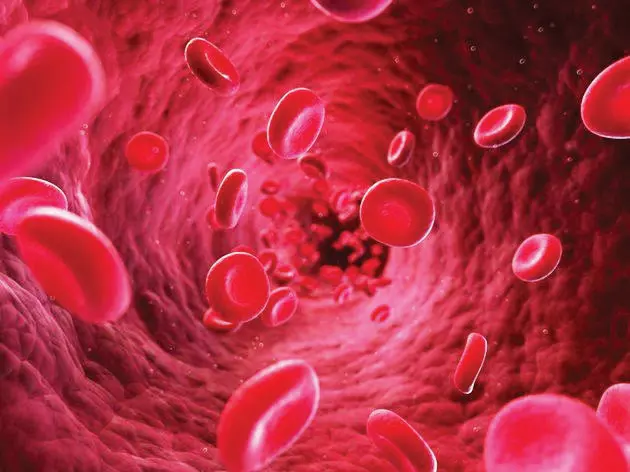William Joe | Reducing anaemia in women could boost India’s GDP

“India is transitioning from women’s development to women-led development with the vision of a new India where women are equal partners in the story of growth and national progress.” This year’s Economic Survey highlights the necessity of gender equality for sustainable development, a sentiment echoed by the recently-released Budget 2024-25. The Gender Budget, an annual financial statement of the total allocation to women-centric schemes, witnessed an increase of over 30 per cent from 2023-24, crossing the Rs 3-lakh-crore mark.
This year’s Economic Survey examines critical factors for women’s empowerment, including education, health and nutrition. While each of these elements are interlinked, it recognises that nutrition serves as a cornerstone for boosting every aspect of an individual’s life. Addressing the fact that simply ensuring adequate calorie intake is not enough, it underscores the essential need for ending micronutrient deficiencies to improve outcomes.
Among these, iron deficiency and anaemia stand out as major challenges as they affect our body’s functioning in various forms. Physiologically, anaemia is characterised by lower-than-normal levels of red blood cells or haemoglobin, leading to debilitating symptoms such as fatigue and breathlessness.
These symptoms are often dismissed or misattributed to other causes, masking the severity of the condition. More severe and long-lasting health implications elevates the risk of death among mothers and infants. Fifty-seven per cent of Indian women aged between 15 and 49 are anaemic, and this is an unrecognised source of increased expenditure on healthcare by both households and governments, both at the Central and the state levels.
An equally pronounced effect of anaemia can be seen in our overall social and economic development. Anaemia causes delayed motor and cognitive development, resulting in poor performance at school and decreased physical performance. In adolescents, it is among the leading causes of years lost to ill health and disability. By disproportionately affecting women, anaemia inhibits their full participation in society and the workforce. The corresponding losses in employment and wage earning have an adverse effect on labour productivity and the overall national GDP. The World Health Organization (WHO) estimates that, globally, up to 11 per cent of gross domestic product (GDP) is lost to maternal and child undernutrition. In India, the Niti Aayog has reported a 4.5 per cent loss in GDP per annum from physical and cognitive losses due to anaemia. To ensure equitable growth, the immediate reduction of anaemia needs to be elevated to the highest policy priority.
According to the World Bank, every US dollar invested in the reduction of anaemia in women could yield $12 in economic returns, underscoring the urgency of this issue and highlighting the need for timely and strategic action. The global community is currently falling short of achieving the Sustainable Development Goal 5, which aims for gender equality and the empowerment of all women and girls by 2030. With the target deadline just half a decade away, India has a critical opportunity to turn its commitments into concrete actions by investing in the health of adolescents and women.
Fortunately, India’s policy landscape is rich with initiatives designed to combat anaemia in women.
The Anaemia Mukt Bharat (AMB) strategy stands out as a focal point for a vast range of interventions aimed at anaemia reduction. Its comprehensive approach centres around iron folic acid (IFA) supplementation, digital testing for immediate results, and addressing non-nutritional causes such as malaria and haemoglobin disorders. It also champions the uptake of new interventions such as fortified food, which can effectively deliver essential nutrients to large numbers of people and is supported by a strong emphasis on communications and behaviour change, ensuring visibility and sustainability.
Moving forward, the three most important things for us to prioritise are communication, compliance, and community participation. A gap in understanding about the severe impact of anaemia persists across both urban and rural populations, normalising symptoms like fatigue and pallor among women. The first step to combat this is to educate communities, families and individuals. Effective messaging can ensure that girls and women comply with the services and consume available supplements.
Widely disseminated and accessible information, whether incorporated into the school curricula or shared widely via health infrastructure or even mass advertising campaigns, is vital to establishing a sense of urgency around mitigating the issue. This, coupled with existing efforts under AMB and other programmes, can prove effective in the long-term reduction of anaemia and ensure sustainable development.
To achieve a Viksit Bharat by 2047, ensuring women’s empowerment is pivotal for overall national progress. Addressing anaemia is a key piece in the puzzle. Initiatives such as Anaemia Mukt Bharat and the Saksham Anganwadi & Poshan 2.0 programme integrate micronutrient sufficiency with behavioural change and exemplify the Indian government’s commitment to a lifecycle approach to nutrition. By investing in women’s health and leveraging programmes that enhance community participation, India can significantly reduce anaemia and its economic burden. As we approach the SDGs deadline, this is a critical moment for India to turn its commitments into tangible actions, ensuring a healthier, more equitable future for all.

